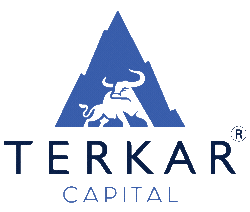Managing Cash Flow with Bill Discounting
Effective Cash Flow management with Bill Discounting offers a strategic advantage for businesses seeking to enhance their liquidity. As a result, instead of waiting for customer payments, your business can access funds immediately by exchanging approved invoices with a financial institution. Consequently, this provides a significant boost to your working capital.
Understanding Bill Discounting Facility
The bill discounting facility allows you to receive an advance against outstanding invoices. Essentially, you sell your invoices at a discount to a lender, who then collects the full amount from your customer at the agreed-upon payment date. This immediate access to funds can be crucial for seizing growth opportunities or managing operational expenses. In other words, bill discounting can be a valuable tool for businesses to improve their cash flow.
There are primarily two types to consider: vendor bill discounting, where suppliers discount invoices issued to buyers, and purchase bill discounting, which, while less common under this specific term, broadly refers to financing solutions linked to payables.
A Simplified Approach to Managing Cash Flow
When a buyer buys assets or goods from the seller, the amount is usually made through a letter of credit. The credit time may vary from 30 days to 120 days. Depending upon the creditworthiness of the buyer, the bank discounts the amount that is required to be paid at the end of the credit period. Bill Discounting is also known as Invoice Discounting.
It means that the bank will charge the interest amount during the credit period as an advance from the buyer’s account. After that, the bill amount is paid at the end of the period. So, concerning the agreed-upon document between the buyer and seller.
Procedure to Avail Bill Discounting Facility
Bill discounting is common in business and involves a simple process to release funds to the seller promptly. Steps in bill discounting:
- Seller and buyer contract to sell goods or services.
- The seller invoices the buyer for the goods sold.
- Buyer accepts the invoice and agrees to pay the dues.
- Seller approaches their bank or lender for bill discounting.
- The lender confirms the transaction’s authenticity and the buyer’s creditworthiness before issuing funds to the seller.
- At the bill’s maturity, the lender or seller’s bank presents the bill to the buyer for payment.
The seller or banker collects payments from the buyer. The seller reimburses the bank promptly. The arrangement involves credit repaid at the loan term’s end.
Learn the Bill Discounting process from the case study.
Features of Bill Discounting
1. Evaluation of creditworthiness
The bankers or financial companies involved will look into the creditworthiness of the buyer as well as the authenticity of the seller before starting into the bill discounting transaction with both parties. This ensures that the risk of bad debt or swindling is greatly reduced.
2. Preferred Banking Partner
The banking parties concerned in bill discounting transactions are ordinarily bigger, reputed, and recognized names in the banking industry. This assures the feasibility of the transaction at the time of maturity of the invoice. Or the authenticity of the paying party.
Also, a bank prefers the buyer to have a long reputation relationship. Because this assures the creditworthiness of the buyer.
3. Inter-Bank Dealing
The bill discounting model includes interbank dealings. The discounting terms have been explained and agreed upon by the buyer and seller’s bank without their direct involvement.
4. Usance Bill
The term of validity within the date of time sanctioned by customs for the bill date and the payment date existence is ordinarily known as the usance period. It means that the bill has to be viable at the period of maturity or payment time.
Bill Discounting Methods
1. Recourse
In this method, the examination of all the documents is on the seller’s bank. After a thorough investigation, they send the same for checking to the buyer’s bank. Here, the seller or the seller’s bank is responsible for any mishap in the whole process.
2. Non-recourse
This method is contrary to the previous one. Thus, the buyer’s bank examines the documents and raises a bill against the seller. The buyer here will be held responsible for any default in bill discounting.
Why Bill Discounting?
Cash Flow management with Bill Discounting is an excellent solution for your working capital needs. If you are experiencing fatigue or struggling to obtain credit limits from banks due to a lack of security or cumbersome processes, bill discounting can help. When buyers request extended credit periods, agreeing to these terms can lead to a cash crisis, hindering your ability to fulfil export orders and limiting your resources and finances.
A speedy and collateral-free working capital solution like bill discounting can significantly support your growing export business. It enhances cash flow, which is essential for any expanding export business.
How Terkar Capital can help you?
In conclusion, Cash Flow management with Bill Discounting is a powerful tool for financial decision-makers. Therefore, by leveraging the bill discounting facility and understanding the bill discounting process, businesses can significantly improve their cash flow, optimize working capital, and achieve greater financial flexibility. Furthermore, exploring options like vendor bill discounting can further refine your financial strategies.
We at Terkar Capital, facilitate bill discounting to empower your business’s growth. Contact us now to learn more about how we can support your financial goals.
The process to avail Bill Discounting
FAQs on Bill Discounting
1. Is Bill discounting a type of loan?
It is a type of invoice financing where the borrower gets the loan against unpaid bills. Thus, In simple words, they are short-term business loans.
2. How is the interest calculated?
The interest calculation is as per the terms of the lending bank or financial institution. It considers the credit period or the tenure of the bill. That may be 30 days, 60 days, 90 days, etc. as the case may be.
3. Who provides Bill discounting services?
Generally, banks provide this service. But nowadays NBFCs or Financial Institutions also offer these services. It is a convenient process. Because documentation is less and eligibility criteria depend on the creditworthiness of the borrower with the bank as well as the credit score of the debtor.
4. What is the repayment period?
The repayment period is the credit period decided as per the agreement between the parties, the buyer and seller. The period of the bill will get over on the maturity date or repayment of money against the bill, whichever is earlier.
5. What are the advantages of Bill Discounting?
It is a fast and convenient process. Also, this financial instrument makes immediate availability of funds to the seller, which does not stop his operations of the business.
6. Is CIBIL score important?
Traditionally, financial instruments are used to come up with some sort of securities. But today they even availed themselves without security. If bill discounting is availed through an unsecured way, CIBIL and the relationship with the banker are primarily checked.










Thank you so much for the words. We really appreciate!!